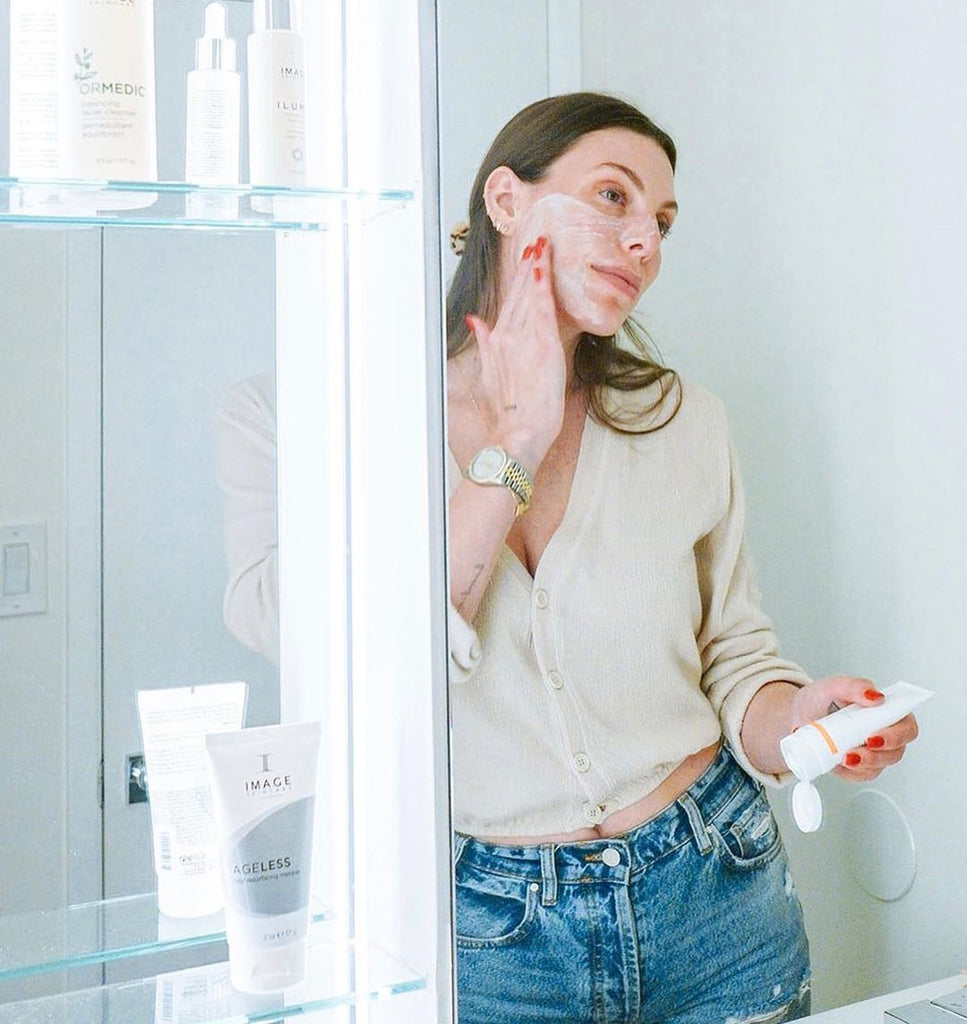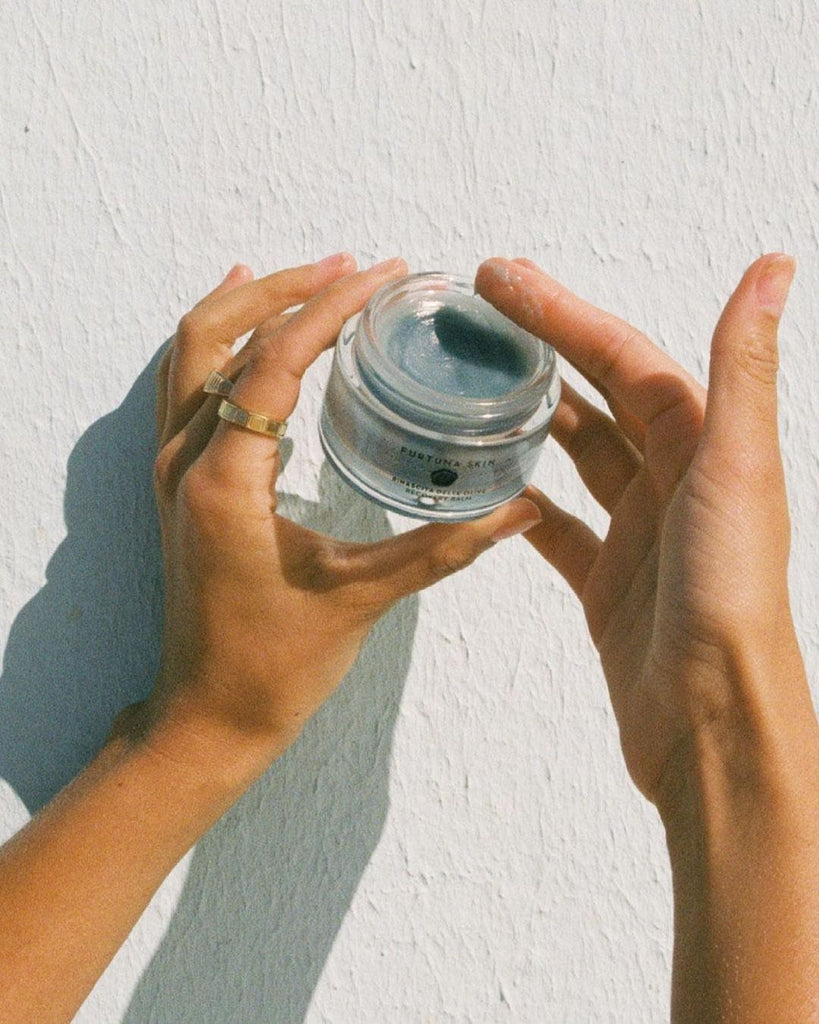A few years ago, I was brushing my teeth in preparation for the workday ahead when I noticed small, dark brown patches all over my cheeks. As a Black woman, a little skin discoloration is nothing new, but I’d never seen spots like this anywhere on my body before, let alone my face. For the next couple of weeks, I tried everything to get rid of the spots: serums, creams, scrubs, masks, prayer, you name it. Nothing worked — because, as a dermatologist told me later, it was melasma.
Prior to my diagnosis, I had never heard of the condition before, let alone its causes or how to treat it. Turns out, it’s a common skin condition that affects a lot of women. According to the American Academy of Dermatology, 90 percent of people who develop melasma are women, a lot of them BIPOC. “Melasma is quite prevalent in Black women because of the size of the melanosomes in skin of color,” explains board-certified dermatologist Dr. Michelle Henry. “Melanosomes are the pigment, so whereas, all people have the same amount of melanocytes, women of color have more melanosomes that are full of more melanin. Any condition that stimulates pigment will more readily do so to women of color because of the presence of excess melanin.”
People with melasma need to treat their skin with the utmost care, especially during the summer months. The oftentimes relentless summer sun can cause major flare-ups, so if you have this type of hyperpigmentation, it’s best to have your SPF and wide-rimmed hat ready to go at all times.
If you’re at a loss, Bustle has more advice from Henry, Candace Marino (aka the LA Facialist), and board-certified dermatologist Dr. Marisa Garshick. Here’s all the info you need on melasma treatments that’ll help you keep summer flare-ups under control (plus, what causes the skin condition in the first place).
What Is Melasma?
When I was first diagnosed, it sounded pretty scary. Marino explains to Bustle via email that it's “a skin condition that presents in large brown or grey patches of pigmentation, usually found on the forehead, cheeks, and upper lip.” (You might have heard the latter referred to as a “melasma mustache.”) There are key differences between melasma and hyperpigmentation; many think they’re the same thing, but that’s not the case.
“Melasma is considered a type of hyperpigmentation,” says Garshick. “Hyperpigmentation is the result of an increase in melanin and can result from UV exposure and environmental stressors that lead to free radical damage that can manifest as brown spots.” She continues by saying that hyperpigmentation “can arise in the setting of what is known as post-inflammatory hyperpigmentation, which refers to skin discoloration that occurs as a result of skin injury or skin inflammation such as after an acne breakout or bug bite.”
So, while the two look similar, they differ in their causes and treatments. Hyperpigmentation is almost always caused by external factors, and can usually be treated by topical creams or serums that will help make it go away for good. Melasma is caused by internal factors, mainly changes in hormones, and requires more creativity in treating it in the short and long term.
What Causes Melasma?
Hormones, hormones, hormones. Marino says that women typically develop it during their “childbearing ages” (meaning their 20s) because of the hormonal changes that occur during that period. Garshick says the birth control pills may trigger melasma, so make sure you talk with both your gynecologist and dermatologist if you’re having problems.
Women also tend to struggle with it during pregnancy itself; the skin condition is often called the “mask of pregnancy,” although anyone can develop the dark spots at any time.
Exposure to sunlight is another notable trigger. Marino says “sunlight affects melasma by causing an inflammatory process in the skin that stimulates the melanocytes (cells in the skin that create pigment).” That’s why summer is a tricky and difficult time; the chances of flare-ups are pretty high, but there are a few ways you can avoid them.
Finding The Best Melasma Treatment
Unfortunately, there’s no known cure, but as Marino explains, “with proper skincare and maintenance treatments like chemical peels,” you can manage it. It’s all about determining what your triggers are, avoiding them as much as you can, and giving your skin as much TLC as possible. Below are a few options to integrate into your skin care regimen this summer.
Sunscreen
Everyone should use SPF diligently, especially if you have melasma. “An essential part of any melasma treatment plan is strict sun protection as sunscreen helps to prevent the discoloration from darkening,” Garshick explains. “Additionally, many people find their melasma comes out in the summer and with strict sun protection, it may help prevent it from appearing.”
Garshick recommends sunscreens that are “broad-spectrum, (UVA and UVB coverage), physical blockers which are zinc oxide or titanium dioxide that are SPF30 or higher.” EltaMD UV Elements Tinted SPF and La Roche’s Anthelios Mineral Tinted Ultra Light Sunscreen Fluid are great SPFs for people with melasma.
Marino advises her clients “to always wear a hat and sunglasses and to reapply SPF every 60-90 minutes if spending time outside.”
Pigment Inhibitors
“Pigment inhibitors are a great idea as well,” Marino explains. “I instruct my melasma patients to be on a good non-hydroquinone pigment inhibitor long-term.” Hydroquinone is a great short-term solution, but make sure you don’t use it religiously for a long period of time. Henry explains that long-term use of hydroquinone could lead to “paradoxical darkening of the skin referred to as ochronosis,” so use with caution.
Azelaic acid, arbutin pigment, tranexamic acid, kojic acid, and licorice root are all fantastic pigment inhibitors to look too. Integrating products that have these ingredients is a grade A choice.
Antioxidant Serums
Vitamin C has become buzzy in the beauty world for a good reason. The antioxidant MVP gives your skin the boost and glow it needs to shine like it's summer all year round. “Everyone with melasma should be using a vitamin c or antioxidant serum,” says Marino. “These ingredients help to fight off the free radicals that enter the skin from the environment, protect the cells, and lessen the damage caused by the radiation we're exposed to from the sun.”
Other Melasma Creams & Topicals
There a few other ingredients you should gravitate towards: “Tetrahydrodiferuloylmethane, a colorless, odorless form of turmeric, is a great ingredient for people with melasma,” Marino explains. “You should also use niacinamide (an anti-inflammatory ingredient), AHAs to exfoliate and lift dead cells that hold onto pigment, and retinol to speed up cell turnover to pull discoloration from the skin.”
Garshick says to avoid going overboard. “It’s best to avoid applying too many products, unless under the direction of your dermatologist, given increased sensitivity can lead to worsening pigmentation,” she explains. She adds that some of these ingredients “should be avoided in pregnancy, so it is best to speak with your doctor prior to treating.”
Medication or In-Office Treatments
If you want to try something more potent, there are a few medications and medical procedures you can try. (Again, with caution.) “There are prescriptions such as Tri-luma, which contains a combination of hydroquinone, a retinoid, and steroid for the treatment of melasma,” Garshick says. “You can also try retinoids, as well as in-office procedures such as chemical peels, micro-needling with platelet-rich plasma (PRP), or lasers that can help.”
If pursuing medication or procedures, it’s imperative that you consult with your dermatologist. “[Melasma] can be particularly sensitive to worsening hyperpigmentation, so it is important to make sure to check with a board-certified dermatologist before doing any specific laser or treatment,” Garshicks says.
Living with melasma can be tough and Garshick (accurately) says it can “feel like you are walking up a down escalator.” But it’s not impossible, even during summer.
This article was originally published on bustle.com.



